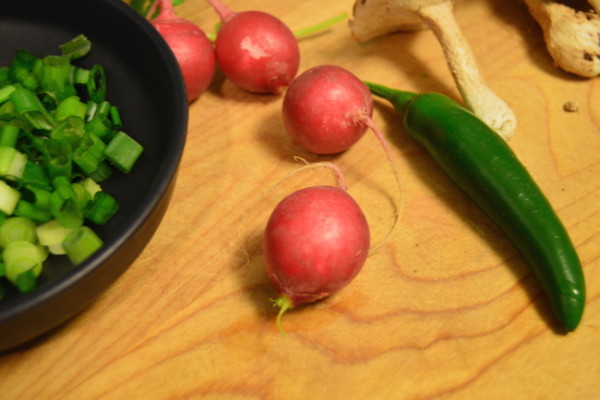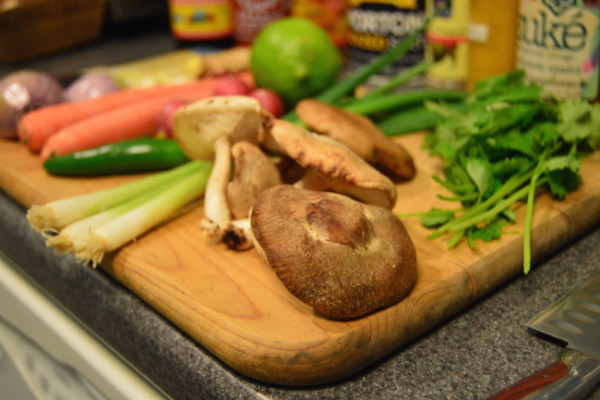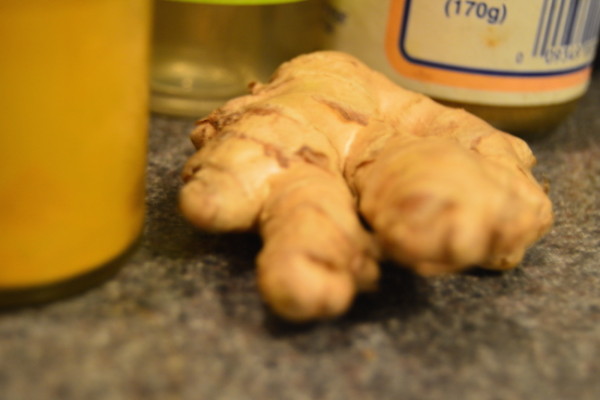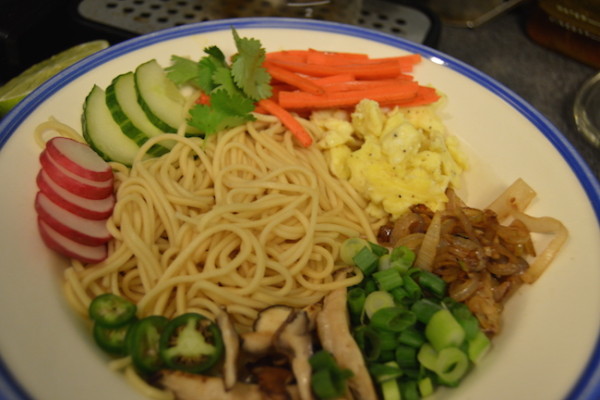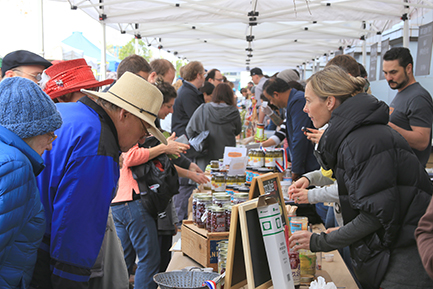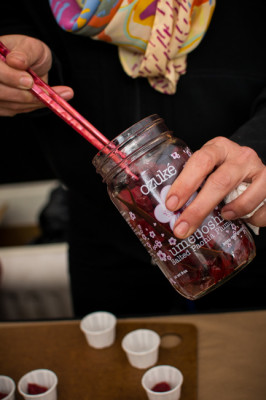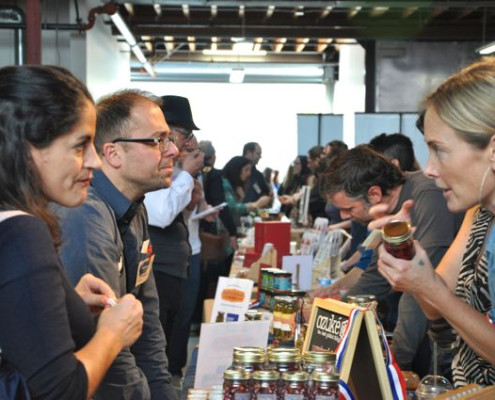
If there were a food that should live and remain in my diet’s 1% it would be cheese. I’d be happy to keep it that way. Somehow, perhaps it’s my Asian genes but rich, creamy, funky cheese tends to set my digestive system on for a riot. It doesn’t stop me from loving it, relishing in it and doing the stilton dance in the very midst of its enjoyment but it simply does not bode well for me in the long run. My best friend is visiting us from London for the holidays and I finally went to Cured with him. Cured (located downtown Boulder) has been carrying our pickles since they opened and I have another friend who works there so I really should have no excuse to have waited for so many months to pay a visit. I just knew that it would be an event and so I held off out of respect for said event. http://cheese-porn.tumblr.com/
My friend Des likened it to being in a brothel – a cheese brothel. There they were, so sumptuous, barely contained by their soft fuzzy raiment, their waxy outer layers flashing barely hidden blue and yellow veins at us. It felt so intimate. Usually there would be some layer of plastic or a cold frosty refrigerated barrier between us and these farm raised hand crafted delights but no, there they were, room temperature, cave aged and ready to be plucked away, wrapped in parchment and devoured with shameless gusto by grabby hands and crusty loaves. I won’t even go into the meaty fermentation – let’s just say that we bought some Spanish Ibérico ham and it was ridiculous. It would be even more ridiculous for me to continue here in this conceit of the fancy bordello and for me to wax ever more eloquent minuets around the glory of that immaculate slab of meat. I would invariably embarrass myself, offend a few feminists and perhaps ruin another perfectly good shirt with drool. The ham became a conversation cornerstone for our holiday festivities. I even put a few precious slices into the chicken broth I made for Christmas Eve Xiao Long Bao (soup dumplings). What strikes me as funny; especially since I’ve been waiting a long while to write this article, it’s been jostling about inside of me for weeks now; what really gets me is that it’s all peasant food… I spent one hundred and fifty dollars at Cured, Boulder’s fancy new meat and cheese mecca, on food of the common people. I bought crusty bread, salt, duck fat, fancy ham, three cheeses whose recipes were each over two centuries old, local beer, coffee and chocolate. This classy embrace of simple hand crafted food reminded me somewhat of Neal Stephenson’s science fiction novel The Diamond Age. His future world had mastered nanotechnology and folks poor and wealthy were capable of manufacturing all of their needs using replicators that literally built all of their material desires from a molecular level. From ham sandwiches to mattresses everything was built one atom at a time and when the item was finished with, consumed it would be thrown back into the machine, broken down and made into something else brand new. Now the New Victorians and New Confucians of this future world treasured hand crafted goods. One would need to have great wealth to own and ride a horse, have another person farm real food for them or hand craft their paper or soap. Anyone can press a button and have the machine version of their desires pooped out into their microwave oven-like device but the more mechanized the world, the more valuable time and true effort become.
There really is a lot to be said for quality and authenticity. I get it I really do. I work with my hands. In my restaurant days I’d see a lot of big box produce flying in the back door getting a slap and tickle and hawked out through the front door as fancy fine dining, it didn’t take much to get folks excited… batter it and fry it, juilienne or brunoise, get your sharp yanagi and slice it up like a ninja. There was enough bustle in the culture of the restaurant so that origins could be forgotten for a while, people were there for the greatest show on earth, one which they could gaze, smell, taste and savor their way through. Lots of drinking and yelling helps too (both were encouraged in the Sushi world where I cut my teeth as a chef). The idea of origin was only really thought of in the late nineties and early aughts world of sushi as an exotic tag. This Bluefin tuna came from Croatia, this king mackerel from the straights of Japan, this Salmon is from Alaska’s Yukon River, only open to US fishing boats for one week in an entire year. Eventually however the bubble burst. Rising gas prices laid the scene for a rude awakening. We were eating petroleum. Each shishito pepper, each unagi slice, carefully staged and manufactured half a world away and sent off nestled in dry ice and styrofoam. Questionable fish farming practices came to light, dangerous use of chemicals from the Chinese manufacturers. I quit sushi in 2008. It was making me sick. I had developed a dangerous throat closing allergy to shellfish and the idea of massive beautiful Bluefin being rounded up during their mating season in the Mediterranean, fattened in a ranch then sold off for a whopping 40,000 dollars a fish turned my stomach. An article on our depleted oceans in the National Geographic that year likened the slaughter of these 600 pound behemoths to the wholesale slaughter of Buffalo in 19th Century USA, excepting the fact that these massive herds of fish being underwater, their shocking culls were less visible. Imagine our outrage if we had some tangible visual representation of this oceanic defilement.
Of course this is just a tiny cross section in the massive outrage that is occurring within our food systems. Finally we live in a world that is technologically capable of feeding the world’s population so why are we faced with still more and more discrepancy of wealth the very poorest of us disenfranchised to the point of not being able to even put a seed in the ground and use the basic power and wealth of the planet on which we live? It all boils down to the corporatization of food, to unfettered monopolies. Mass suicides of subsistence farmers in India –farmers told that the crops of their ancestors that they have been growing in the very cradle of the civilized world since the origins of the words used to describe these very actions – these crops are now patented or they are modified so that their fruit bears no seed, forcing the very poorest farmers in the world to buy new seed year after year. The poor are in the stranglehold of these massive conglomerates more so than ever before in human history. Power, land and money have always been in the hands of the few but the major difference is the now severed connection between human beings and a nurturing earth. Peasant food – wild game, mushrooms, cabbage, cheese, pickles and fruit laid aside for the winter time. Hard work made these items attainable. Direct from nature, time, knowledge and effort could create truly wonderful sustenance from these basic materials and yet now instead of nurturing the masses these items are hard sought, the realms of food nerds, specialists with fancy shops on high street. I know a little bit of what it is like to be poor. I shopped at Walmart on and off for a year after I got laid off from my last head chef job. I had a certain amount of shame attached to the fact, I was however lowering my weekly shopping cart from about 150 dollars a week to about 70, it made a huge financial difference during a very uncertain time. I tried to remain positive about it. I argued a certain solidarity with my Latino coworkers. We had jammed out in the kitchen to the same jolly polka beats, cutting boxes of baby artichokes until all of our fingers were stained brownish black and now we were shopping in the same place. I pulled my Jetta up alongside their pickup trucks in the massive parking lot. I bought beef cheeks, tongue and tripe, items that definitely were not available at Wholefoods. I enjoyed the easy availability of fresh frozen green chiles and fresh frozen posole. I encouraged organics by buying what became available through that retailer arguing to myself that any support for good farming practices even via a massive big box retailer like Walmart had to be a good thing. But all the while I had a subterranean feeling of dread. I was the only person in this whole massive football field of groceries and Chinese made crappy goods that had come in with her own grocery bags. The time that I forgot my bags I watched in horror as my checkout lady threw single items in thin plastic bags and double bagged anything larger than two pounds in weight. My sinking feeling landed with a hard thump in the deepest part of my gut with the realization that no matter how I rouged and powdered it the fact still remained that I was eating from the machine. Love, care and nurture were diminishing from my food… the machine was feeding me and I was feeding it. I was finally awake to a supreme irony – here I was impoverished carefully putting each dime I could scrape together into the eye of the pyramid. They had won. There they were collecting my money, my spirit and my hope and I was dumb enough, desperate enough to travel down that road.
To say that food has played a large part in my personal and spiritual development would be an understatement. Feeding and eating are a large part of who I am and what I believe I am here on this planet to do. One of my most powerful food realizations came with an experience of killing and butchering an animal. It was 2001. I was living in the mountains in Colorado, 9,000 feet above sea level. A friend at that time traveled regularly back and forth from the Navaho reservation in Arizona. He brought us a goat. The goat was tethered for a day in the upper field of the house where we were staying, we fed it hay. The next day I held the goat. Andrew slit its throat. I saw its eyes flash up at me in a moment of knowledge, at the very same instant one of the horses a quarter mile away in the lower field cried out splitting the clear mountain silence. Andrew and I held the goat close and strong until it bled out and went limp. We strung it up on a tree and I did most of the butchering. The logic of fur, bone, meat and fat made perfect sense to my chef’s mind. I had butchered many mostly whole animals, fish and animal parts before, but this was the first time that I had seen the whole process through. We took the goat’s liver. Shiny, plump and ruby red, I sliced and sautéed it in butter with salt and pepper. We ate it still pink and slightly chewy in the middle. Never before had food had such power over me. It was like a drug. Life force surged through me and made me feel drunk, aggravated and horny. This was real food. Our goat had eaten nothing its whole life but sage grass under a crisp blue sky. Its death had come through my own intention, by my hand and with my thanks, my effort and energy had opened and partitioned its body, I had to think carefully about what I would do with guts, heart and kidneys. Every single thing that I had eaten before that point had been a masquerade, an appropriation. This life force that I was feeling now had been stolen from me, sucked out by machines, crowded together in an uncaring pen, pumped full of hormones and antibiotics, sprayed by aeroplanes, partitioned by plastic and marched, uniformed onto shelves under the cold glare of neon lights and regional managers. Even in the time of the pharaohs this essential power was available to all people, this pure clean energy from a living and healthy planet. Even the darkest days of the dark ages, your tithes might go to the church, you might be afraid of a burning hellish afterlife, but you could always milk a cow and be nurtured in honest, goodly energy. Today with access to information from across the globe in our back pockets we eat mostly shadow food. Only the wealthiest of us can afford to eat from nature: the rest suck from the glom of the machine, too uninformed, afraid or tired to truly connect with our planet and with one another. The solution is so simple. It’s not an all or nothing embrace of ploughshares, we don’t all of us suddenly need to trade our Priuses in for tractors or give up our Labradors for goats and chickens. We simply need to be aware, to take time and make effort where our feeding is concerned. With this awareness not only do we return to truly nurturing our bodies and our planet we can learn to support the people around us who, no longer happy with consuming from plastic and cardboard smothered with trite logos have instead become producers, artists and artisans. Our beliefs craft our reality. All we need to do to change the status quo is to one meal at a time quit buying in to it. I love the imagery of the pyramid turned into a tree. We are the 99%. We are the roots. We are deeply embedded in a life giving Earth. May we all flourish.
http://www.huffingtonpost.com/willie-nelson/occupy-food-system_b_1154212.html.
http://www.frontporchrepublic.com/2011/12/occupy-food-and-other-simple-things/
http://www.youtube.com/watch?v=MxvST8o18fY
 Visiting Santa Fe recently I was introduced to these sandwiches and could not wait to get back and reverse engineer it so that I could make it with Ozuke kimchi. It is both hearty and satisfying and yet feels good on the belly because of the kimchi.
Visiting Santa Fe recently I was introduced to these sandwiches and could not wait to get back and reverse engineer it so that I could make it with Ozuke kimchi. It is both hearty and satisfying and yet feels good on the belly because of the kimchi.




